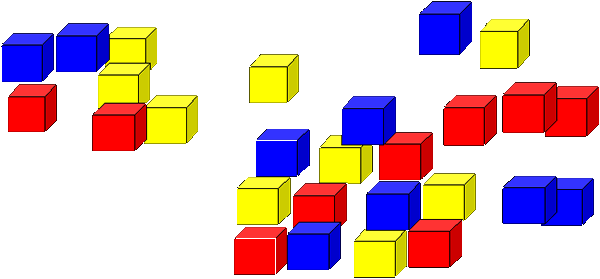Copyright © University of Cambridge. All rights reserved.
'Creating Cubes' printed from https://nrich.maths.org/
Show menu
Why do this problem?
This activity is very good as a spatial challenge. Often having visual clues prompts pupils to have a go and helps them to make sense of the problem. This task also encourages them to be curious and wonder if it is possible to arrange cubes in this way.
Possible approach
You can lead up to this challenge by starting with a cube using two colours first. Having plenty of interlocking cubes available for children to try out their ideas will be essential. You could also begin by asking children if they think it is possible to create a cube with no two colours in the same row or column, using questions such as "I wonder ...? or 'Could I ...?'
Key questions
How could you start the cube?
Is there only one way of doing it?
Have you all got the same solution?
Are some of the solutions similar?
Possible extension
Some children will be able to explain how they solved the problem. You could ask them to predict and then test if this is possible for a larger cube.
